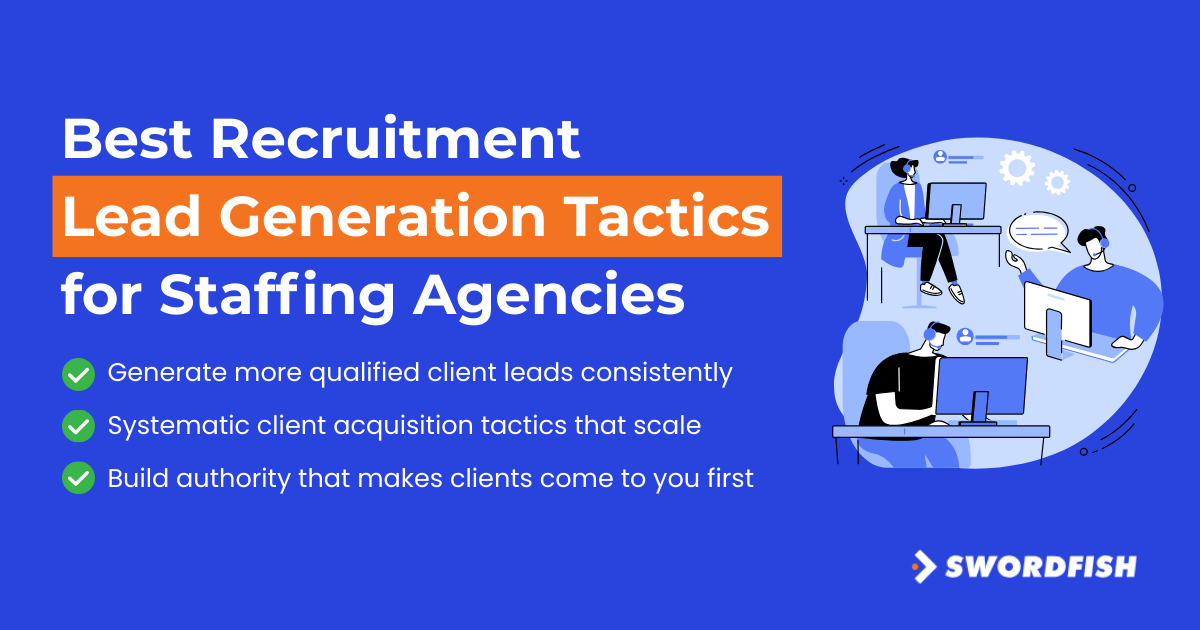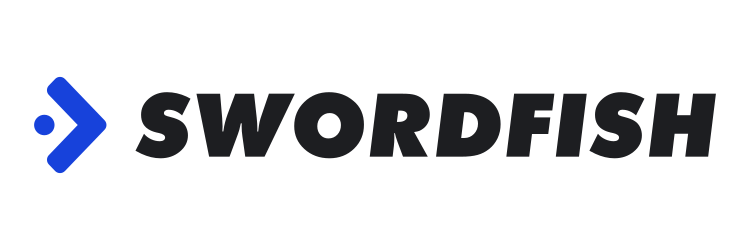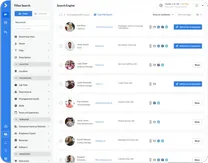
Successful recruitment lead generation requires a multi-channel approach combining LinkedIn prospecting, content marketing, referral programs, and strategic paid advertising. Top-performing staffing agencies generate 40% more qualified leads by leveraging data-driven prospecting tools, creating valuable content for hiring managers, and maintaining strong referral networks. The key is balancing inbound strategies (content, SEO) with outbound tactics (LinkedIn outreach, cold calling) while using accurate contact data to maximize conversion rates.
Introduction
The recruitment industry is experiencing unprecedented competition, with over 25,000 staffing agencies operating in the US alone. For staffing agencies, recruitment lead generation tactics have become the difference between thriving and merely surviving in this crowded marketplace.
Modern recruitment lead generation goes beyond posting job ads and waiting for responses. Today’s successful agencies employ sophisticated tactics that attract both high-quality candidates and hiring managers simultaneously. According to the American Staffing Association, agencies using multi-channel lead generation strategies often see significant increases in conversion rates compared to those relying on single-channel approaches
Whether you’re targeting Fortune 500 companies or specialized niche markets, the right recruitment lead generation tactics can transform your agency’s growth trajectory. This comprehensive guide explores proven strategies that top-performing staffing agencies use to generate consistent, high-quality leads in 2025.
Understanding Modern Recruitment Lead Generation
Recruitment lead generation has evolved significantly from traditional methods. Today’s landscape requires agencies to think beyond simple job postings and embrace a holistic approach that encompasses both client acquisition and candidate sourcing.
The modern recruitment ecosystem operates on relationship-building and value creation. Hiring managers are overwhelmed with pitches from staffing agencies, making it crucial to differentiate through expertise, insights, and genuine value delivery. Similarly, top candidates are often passive and require strategic outreach to engage.
Successful agencies understand that recruitment lead generation tactics must address two distinct audiences: companies seeking talent and professionals considering new opportunities. This dual-focus approach requires sophisticated targeting, personalized messaging, and robust data management systems.
The integration of technology has also transformed how agencies approach lead generation. CRM systems, AI-powered sourcing tools, and advanced contact databases now enable precision targeting that was impossible just a few years ago.
How to Leverage LinkedIn for B2B Recruitment Lead Generation and Client Prospecting
LinkedIn remains the cornerstone of effective recruitment lead generation tactics, with over 900 million professionals actively using the platform. For staffing agencies, LinkedIn offers unparalleled access to decision-makers and passive candidates.
Advanced LinkedIn Prospecting Strategies
Start by optimizing your agency’s LinkedIn presence. Your company page should clearly communicate your specializations, success stories, and unique value proposition. Individual recruiters should maintain professional profiles that position them as industry experts rather than generic salespeople.
Use LinkedIn Sales Navigator to identify target companies experiencing growth, leadership changes, or expansion into new markets. These signals often indicate upcoming hiring needs. Create saved searches for specific industries, company sizes, and job functions relevant to your specialties.
When reaching out to hiring managers, personalize every message with specific insights about their company, industry challenges, or recent developments. Personalized connection requests tend to have a much higher acceptance rate than generic ones, often seeing rates of 40% or higher.
Content Strategy for LinkedIn Engagement
Share valuable content that demonstrates your market knowledge. Weekly industry reports, salary surveys, and hiring trend analyses position your agency as a thought leader. This content attracts inbound inquiries from companies seeking expertise.
Engage meaningfully with your target audience’s posts. Thoughtful comments on hiring managers’ updates often generate more response than cold outreach. This approach builds relationships organically while demonstrating your industry knowledge.
LinkedIn Automation and Tools
While maintaining personal touch, leverage LinkedIn automation tools responsibly. Tools like Phantom buster or LinkedIn Helper can streamline connection requests and follow-ups, but always ensure messages remain personalized and valuable.
Consider using contact finding tools to supplement LinkedIn data with verified email addresses and phone numbers, enabling multi-channel outreach campaigns.
What Are the Most Effective Content Marketing Strategies for Attracting Hiring Managers?
Content marketing serves as a powerful lead magnet for recruitment agencies, attracting hiring managers seeking industry insights and talent acquisition guidance. Effective content strategies position your agency as a trusted advisor rather than just another vendor.
Creating High-Value Content That Converts
Develop content that addresses hiring managers’ specific pain points: finding qualified candidates quickly, understanding market salary trends, navigating remote work policies, and building diverse teams. Research shows that 78% of hiring managers prefer working with agencies that demonstrate deep industry knowledge through their content.
Create comprehensive resources like industry-specific salary guides, hiring process templates, and candidate assessment frameworks. These resources generate leads while showcasing your expertise. For example, a detailed “2025 Tech Hiring Guide” can attract dozens of qualified prospects over several months.
Video content performs exceptionally well in recruitment marketing. Consider creating interview tips, industry trend discussions, and client success stories. Video content tends to receive significantly more shares than text and image content combined, with some reports showing up to 1200% higher engagement.
SEO-Optimized Blog Strategy
Maintain an active blog targeting keywords that hiring managers search for. Topics like how to find email addresses and best recruitment CRM software attract organic traffic from companies researching talent acquisition solutions.
Focus on long-tail keywords specific to your industries. Instead of targeting “recruitment,” target “healthcare recruitment in Dallas” or “fintech hiring trends 2025.” These specific topics face less competition while attracting highly qualified traffic.
Email Newsletter Excellence
Develop a weekly or bi-weekly newsletter featuring market insights, hiring tips, and industry news. Successful agencies report that email newsletters generate 3-5 qualified leads per month when consistently delivering value.
Segment your email list by industry, company size, and hiring volume to ensure relevant content delivery. Personalized newsletters have 26% higher open rates than generic communications.
How to Build Referral Programs That Generate Consistent Recruitment Leads
Referral programs leverage your existing network to generate high-quality leads with significantly higher conversion rates. Referral leads generally have higher conversion rates compared to cold leads, with some studies showing up to 4x better results.
Designing Effective Referral Incentive Structures
Create tiered incentive programs that reward both successful placements and qualified introductions. Consider offering cash bonuses, gift cards, or service credits for successful referrals. Many agencies provide $500-$1,000 bonuses for client referrals that result in placements.
Implement quarterly referral contests with additional prizes for top contributors. Public recognition often motivates referrals as much as monetary rewards.
Client Referral Strategies
Ask satisfied clients directly for referrals during placement celebrations or quarterly business reviews. Frame requests around expanding success to their network rather than simply asking for favors.
Provide clients with referral tools like email templates, one-page capability sheets, and success story summaries. Make it easy for them to recommend your services by providing everything they need.
Candidate Referral Programs
Develop robust candidate referral programs encouraging placed professionals to refer colleagues. Offer attractive bonuses for successful placements, typically $1,000-$2,500 depending on role seniority.
Create “referral kits” for placed candidates including referral links, email templates, and clear instructions on your ideal candidate profiles.
Partner Network Development
Build strategic partnerships with complementary service providers like HR consultants, executive coaches, and business advisors. These partnerships create mutual referral opportunities while expanding your market reach.
Join industry associations and local business groups where potential clients congregate. Regular participation in these organizations generates natural referral opportunities.
Which Paid Advertising Channels Work Best for Staffing Agencies?
Paid advertising provides immediate visibility and lead generation when executed strategically. The key is choosing the right platforms and targeting strategies for your specific market segments.
Google Ads vs LinkedIn Ads: Platform Comparison
Google Ads excel for capturing high-intent searches. Target keywords like “staffing agency [city],” “temp agency near me,” and industry-specific terms. Google Ads generally generate leads at varying costs, often between $50-$150 per qualified lead, depending on factors like competition and targeting.
Focus on local SEO and geographic targeting for Google Ads. Most staffing relationships require local presence, making geographic targeting crucial for conversion optimization.
LinkedIn Ads provide superior targeting for B2B relationships. Target specific industries, company sizes, job functions, and seniority levels. LinkedIn Ads can generate leads at higher costs, often ranging from $100-$300 per lead, depending on targeting and competition
Use LinkedIn’s Matched Audiences feature to retarget website visitors and upload customer lists for lookalike targeting. This approach improves conversion rates while reducing acquisition costs.
Campaign Strategy and Budget Allocation
Allocate 60% of paid advertising budget to proven channels and 40% to testing new platforms or strategies. This approach maintains consistent lead flow while enabling growth experimentation.
Start with small budgets ($1,000-$2,000/month) to test messaging, targeting, and conversion optimization before scaling successful campaigns.
Creative and Messaging Strategies
Develop ad creative that speaks directly to hiring pain points: “Struggling to find qualified developers?” or “Need accounting professionals within 30 days?” Problem-focused messaging typically outperforms generic brand awareness campaigns.
Test multiple ad formats including video testimonials, case studies, and behind-the-scenes content. Video ads typically achieve higher engagement rates than static images, with some reports showing an increase of 20-30%.
How to Create Webinars and Events That Attract High-Quality Recruitment Clients
Educational events position your agency as an industry authority while generating qualified leads. Webinars and events provide opportunities for extended engagement that email and social media cannot match.
Webinar Topic Selection and Planning
Choose topics that address current industry challenges. Popular webinar topics include “Navigating the Great Resignation,” “Building Remote Teams,” and “Diversity Hiring Strategies.” Research trending topics using tools like Google Trends and LinkedIn polls.
Partner with industry experts, HR software providers, or compensation consultants to enhance credibility and reach. Co-hosted webinars often attract 50-100% larger audiences than solo presentations.
Event Marketing and Promotion
Promote webinars across multiple channels: email lists, social media, partner networks, and industry publications. Start promotion 3-4 weeks before events to maximize registration.
Create compelling landing pages with clear value propositions, speaker credentials, and attendee testimonials from previous events. Include agenda previews and key takeaways to increase registration rates.
Converting Event Attendees to Clients
Follow up with personalized emails within 24 hours of events. Provide additional resources related to webinar topics and offer one-on-one consultations for specific challenges.
Track attendee engagement during webinars to identify the most interested prospects. Participants who ask questions or engage in chat typically represent higher-quality leads.
Advanced Technology Integration for Lead Generation
Modern recruitment lead generation tactics require sophisticated technology integration to maximize efficiency and results. The right tools can multiply your team’s productivity while improving lead quality.
CRM and Lead Management Systems
Implement robust CRM systems that track both client and candidate interactions. Systems like Bullhorn, Vincere, or JobAdder provide recruitment-specific functionality that generic CRMs lack.
Use lead scoring to prioritize follow-up activities. Assign points based on company size, industry fit, engagement level, and specific needs indicators. This approach ensures your team focuses on the highest-probability opportunities.
Contact Data and Enrichment Tools
Accurate contact information is crucial for successful outreach. People finder sites and professional contact databases provide verified email addresses and phone numbers for decision-makers.
Consider tools that provide real-time email validation to maintain high deliverability rates. Invalid email addresses can damage sender reputation and reduce campaign effectiveness.
Marketing Automation Workflows
Develop automated nurture sequences for different prospect types. Cold leads might receive educational content over 90 days, while warm prospects get immediate consultation offers.
Use behavioral triggers to customize communication timing. For example, send hiring guides to prospects who download salary surveys, indicating active hiring interest.
Measuring and Optimizing Lead Generation Performance
Effective recruitment lead generation tactics require continuous measurement and optimization. Without proper metrics, agencies waste resources on ineffective strategies while missing optimization opportunities.
Key Performance Indicators (KPIs)
Track lead quality metrics beyond simple volume. Monitor conversion rates from lead to consultation, consultation to proposal, and proposal to placement. These metrics reveal funnel bottlenecks and optimization opportunities.
Measure cost per qualified lead across different channels. While LinkedIn might generate leads at higher costs, they often convert at higher rates, resulting in better overall ROI.
A/B Testing and Optimization
Test different messaging approaches, offer types, and contact timing. Small improvements in conversion rates compound significantly over time. A 10% improvement in lead conversion can double annual revenue growth.
Experiment with different lead magnets: free consultations, industry reports, salary surveys, or hiring process audits. Track which offers generate the highest-quality leads for your target market.
Technology and Analytics Integration
Use Google Analytics and CRM integration to track complete customer journeys from initial contact to placement completion. This data reveals which marketing channels generate the most valuable long-term relationships.
Implement call tracking for phone-based inquiries to measure offline conversion rates from online marketing efforts.
Conclusion
Successful recruitment lead generation tactics in 2025 require a strategic blend of digital marketing, relationship building, and technology integration. The most effective agencies combine LinkedIn prospecting with valuable content marketing, robust referral programs, strategic paid advertising, and educational events to create comprehensive lead generation systems.
The key to sustainable growth lies in consistent execution across multiple channels while continuously measuring and optimizing performance. Agencies that invest in proper tools, training, and technology will significantly outperform competitors relying on outdated approaches.
Remember that recruitment lead generation tactics work best when they provide genuine value to prospects. Focus on solving hiring challenges, sharing market insights, and building trust rather than simply promoting your services.
Ready to transform your agency’s lead generation? Start by implementing one strategy at a time, measuring results, and scaling successful approaches. With consistent effort and the right recruitment lead generation tactics, your staffing agency can achieve sustainable growth while building lasting client relationships.
Try Swordfish for free to access verified contact data for your recruitment prospecting campaigns and accelerate your lead generation results.
About the Author
Drew Clark is Co-Founder and CRO at Swordfish.ai and Heartbeat.ai, where he’s spearheaded sales operations since 2019. Drew works with sales, recruiting, and marketing teams to develop outbound strategies, leading to 25+ new business demonstrations per week. Based in England, Drew brings over 6 years of B2B sales leadership experience. Connect with Drew on LinkedIn.


 View Products
View Products



